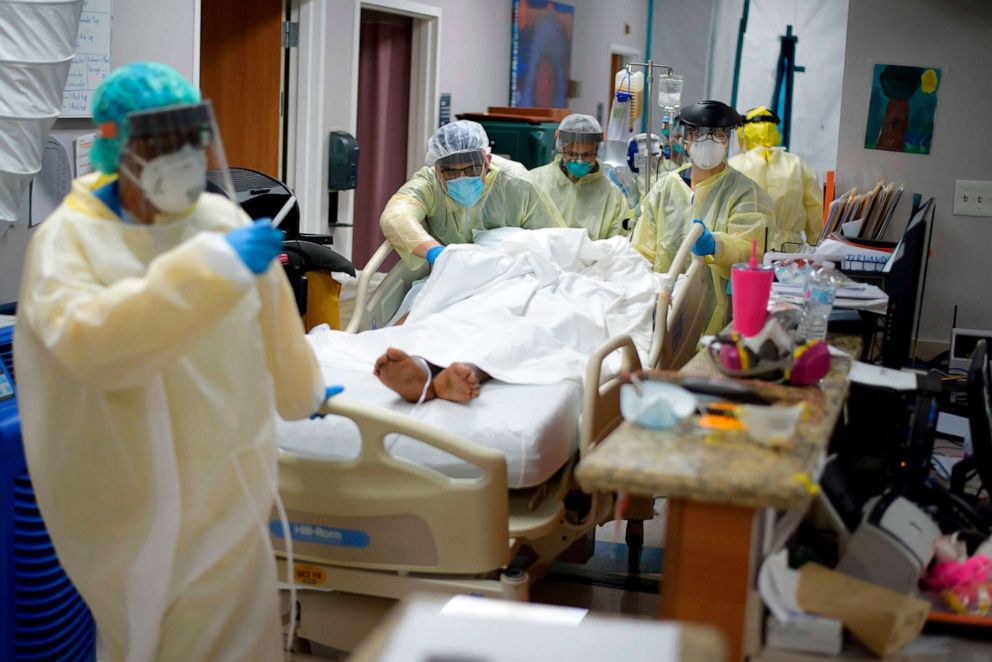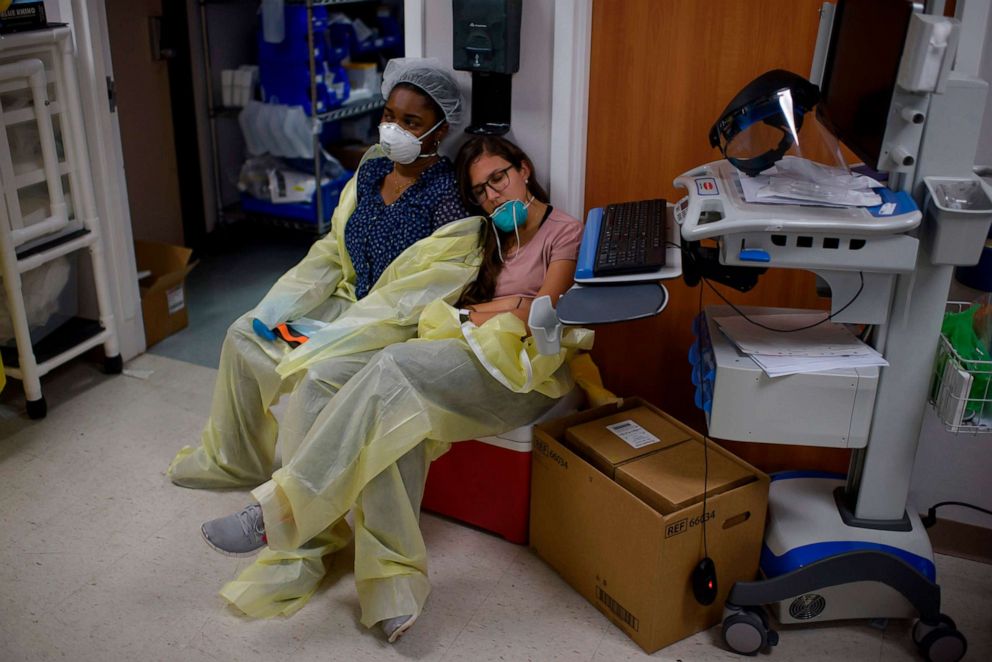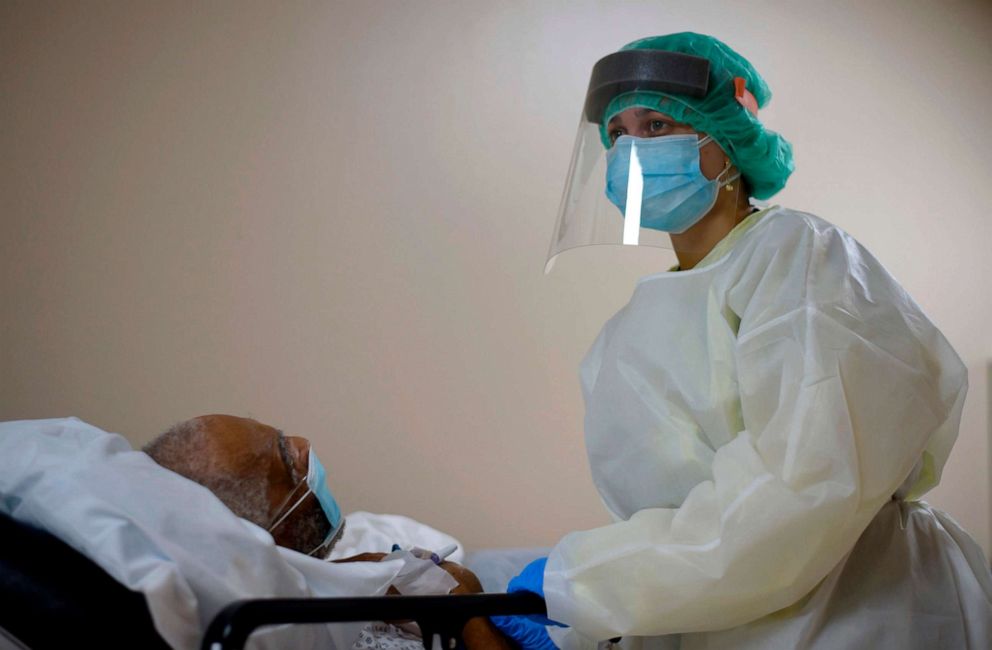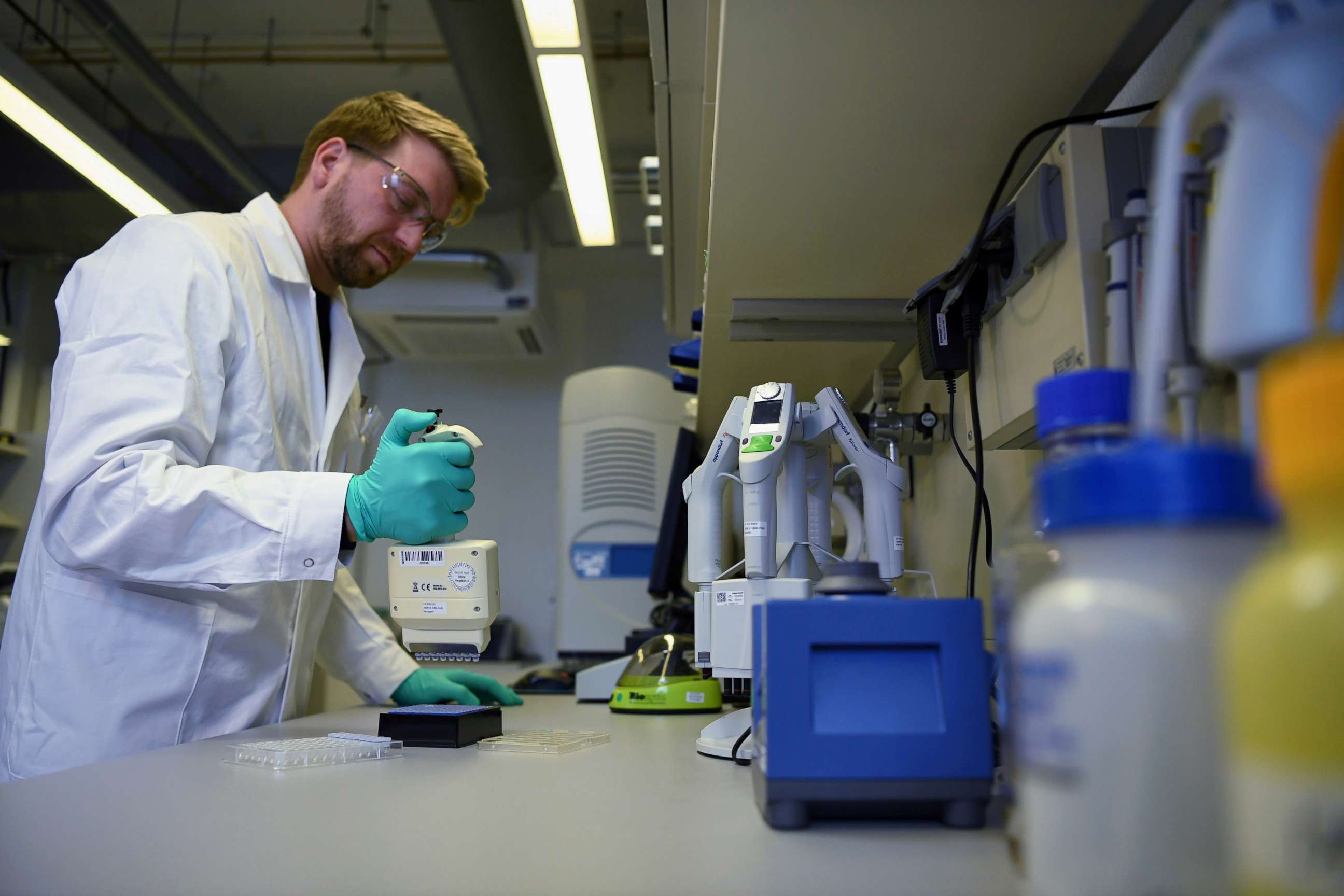Why scientists think COVID-19 may be spread through particles in the air
"There's been increasing evidence that transmission is happening by inhalation."
A group of 239 scientists from over 30 countries have published a letter urging the World Health Organization (WHO) and other public health agencies to more seriously consider the potential spread of COVID-19 through inhalation of small particles lingering in the air.
The WHO said in a press briefing on Tuesday that it would consider "emerging evidence" that the virus may be spread through small aerosolized particles -- sometimes called airborne transmission. The debate around whether or not the virus can be spread through particles in the air has been ongoing for months but the current WHO guidance states that the virus spreads "primarily through droplets of saliva or or discharge from the nose when an infected person coughs or sneezes."
"The World Health Organization acknowledges that transmission is mainly by large respiratory droplets when you cough or talk and fly through the air and land directly on someone's eyes or nose or mouth," said Dr. Linsey Marr, professor of civil and environmental engineering at Virginia Tech, who specializes in aerosol science and contributed to the letter. "But there's been increasing evidence that transmission is happening also by inhalation of much smaller droplets that we call aerosols and some public health organizations have recognized this but we wanted to make the WHO more aware of this so they can put out guidance worldwide."
In Tuesday's press briefing WHO technical lead for the infection prevention task force Professor Benedetta Allegranzi said, "We acknowledge there's emerging evidence in this field - as in all other fields regarding the COVID-19 virus and pandemic -- and therefore we believe we have to be open to this evidence and understand its implications regarding the modes of transmission and regarding the precautions that need to be taken."
But WHO's epidemiologist Dr. Maria Van Kerkhove was still more cautious in her response saying that the WHO has been been looking into these reports since April. Now, the focus is on "the possible role of airborne transmission in other settings ... particularly close settings where you have poor ventilation."

"We've got clusters of person to person transmission happening indoors and there is asymptomatic transmission going on, no coughing, no sneezing, no large droplets being generated and splashed into people's face," said Dr. Lisa Brosseau, an aerosol specialist and research consultant at the Center for Infectious Disease Research and Policy at the University of Minnesota. She said that in these scenarios the most likely mode of transmission is inhalation of particles in the air.
Droplet transmission describes the situation when a person spreads the virus through directly sneezing or coughing on someone. Sometimes these large respiratory droplets may also land on surfaces and a person can be indirectly infected through touching their face after coming in contact with a contaminated surface.
Although experts generally agree the virus can be spread through respiratory droplets there is less consensus around aerosolized -- or airborne -- transmission, or the how long and how far these tiny infectious particles can travel in the air.
In the letter scientists point to a mounting body of evidence that supports the potential of airborne transmission. They cite a Chinese case study of video records where the virus was transmitted between three parties in a restaurant without any evidence of "direct or indirect contact," suggesting that the virus must have been spread through the air.
They also point out that particles from viruses of the same family, such as Middle Eastern Respiratory Syndrome (MERS), can be exhaled and detected in indoor environments of infected patients, posing a risk to people sharing this environment and breathing in the same air.
Additionally, several hospital-based studies have detected the coronavirus' genetic material in air samples collected from isolation rooms of COVID-19 patients -- although it's not clear yet if these samples are capable of infecting people.

Scientists acknowledge that more evidence is needed. According to Marr, studying airborne particles is much harder because you "need specialized techniques and special equipment to collect aerosols and measure them," which is only fully understood by a small subfield of aerosol scientists. The standards, she said, for proving airborne transmission are set much higher than that for other types of transmission.
"We have as much evidence for airborne transmission as we do for any other form of transmission at this point," Marr said.
Experts say that outdated definitions and arbitrary dichotomies are also adding unnecessary hurdles in further clarifying how the virus is actually transmitted.
"Traditionally the word airborne has been associated with traveling long distances, but really what we are trying to say is that it seems that inhalation of aerosol happens at short and close contact ranges too," said Marr. Some experts have taken issue with the WHO's technical definition of 'airborne,' arguing it is too narrow and relies on methods derived from the 1930s and 40s.
The WHO says a virus is 'airborne' if it can be spread by particles that are smaller than 5 microns -- smaller than an invisible grain of dust -- and viable over a distance greater than approximately 3 feet.
Brosseau said that the definition of airborne completely overlooks the potential inhalation of particles near the source and has previously pushed WHO along with other public health organizations to expand their definition. "It doesn't meet common sense. You don't need to be a physicist."
According to Dr. Donald Milton, professor of environmental health at the University of Maryland School of Public Health and co-author of the letter, "You can have particles as big as 10 or 20 or even 30 microns that can float quite a long distance indoors."
Experts say that the 6 feet rule may not always be enough.
"In a poorly ventilated environment 6 feet is not gonna mean very much," said Milton. "Indoor air is still and being stirred up by air conditioning system and heat/thermal plumes from people, lamps, and computer screens. This will keep aerosols much bigger than 5 microns floating around and and carry them much farther than 6 feet, even if it's just people talking and singing nobody with explosive coughs."

"We should replace the 6 foot rule with distance and time matters," added Brosseau. "Distance and time is key. The further you are from the source and the shorter period of time, the lower the concentration will be. I can't say what the distance is, but make it as great as possible."
Milton emphasized that "the virus is no different today than it was yesterday. What's different is our understanding of how it transmits." As a respiratory virus, some of it is indeed still transmitted through direct contact of respiratory droplets secreted through sneezes and coughs or contaminated surfaces, so washing hands and disinfecting surfaces is still important.
The Centers for Disease Control and Prevention in their criteria on how the virus spread, say the virus is spread"mainly through respiratory droplets produced when an infected person coughs, sneezes, or talks" and that some of these droplets can "possibly be inhaled into the lungs." ABC reached out to the CDC for comment.
There is concern about creating fear, said Milton, but acknowledging the potential mode of transmission through aerosol particles may help us learn how to stay safer in the long run.
Experts are still determining how many infectious particles a person must be exposed to in order to actually get sick. "We don't know the infectious dose," said Brosseau and it may vary based on your current medical condition, or whether or not the particles are being inhaled or droplets are coming in direct contact directly with your face.
Dr. Lydia Bourouiba, an associate professor at MIT who studies fluid dynamics and the spread of pathogens, published an article in the Journal of the American Medical Association in March calling for the rethinking of coronavirus transmission -- pointing to her research that showed that sneezes and coughs could spread gas clouds of droplets much further than 6 feet.

In an interview on Tuesday, she called the dispute over droplet and aerosol transmission a "false debate," that limited efforts to craft effective safety guidelines.
"In terms of reopening, guiding everything based on this social distancing rule of one to two meters, or three to six feet in different countries … reopening based on that is not sufficient for indoor spaces," she told ABC News.
Bourouiba, who did not sign the letter to the WHO, citing "gaps in the way the science and solutions" were presented, said the CDC should implement different distancing guidelines based on categories of indoors spaces, that also take airflow and circulation into account.
And while the science of airborne COVID-19 transmission is still being studied, experts including WHO officials agree that an enclosed, crowded, poorly ventilated room is riskier than the outdoors and recommend optimal ventilation, physical distancing, face coverings, among other precautions to reduce risk of infection.
All experts also say to avoid the 3 Cs: closed, poorly ventilated environments, crowded spaces, and close contacts. "When the three overlap, that's where you get outbreaks," said Milton.
Milton added, "I think if you are careful with the messaging you can make it clear there are things you can do, it's not out of your hands, you can empower people with that knowledge."
ABC News' Ben Siegel contributed to this report.



